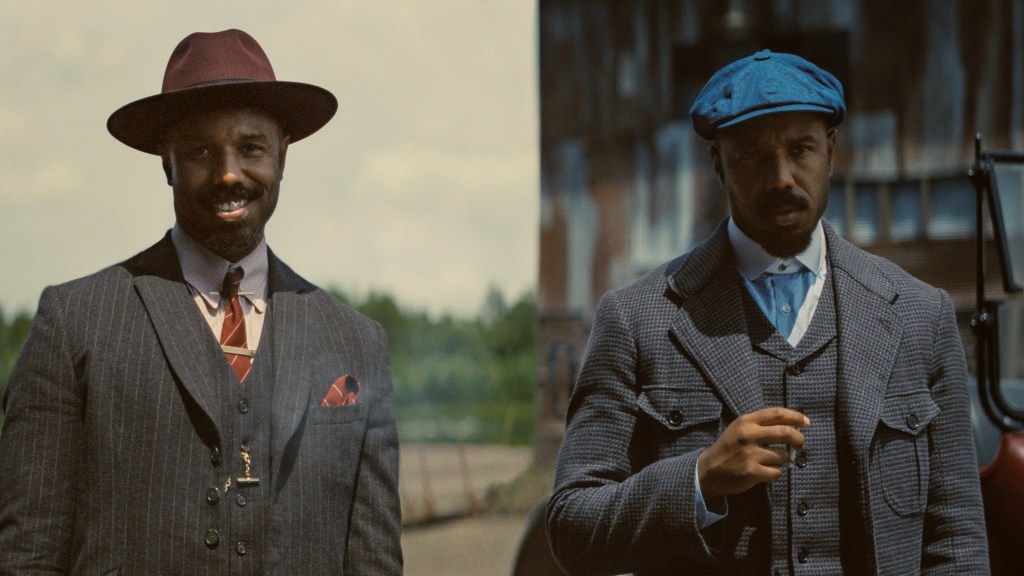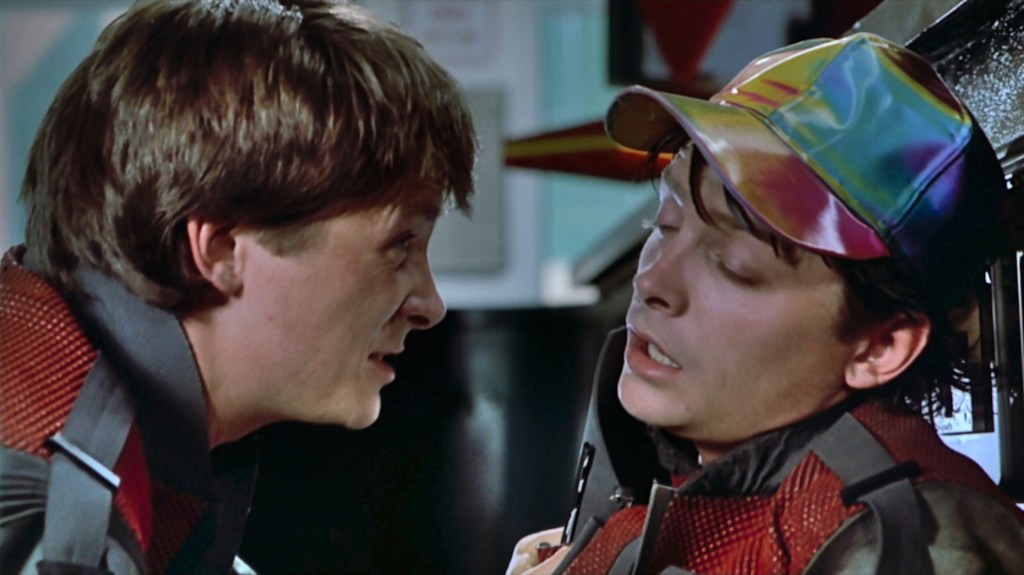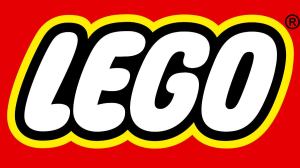The idea of an actor playing multiple characters in the same scene, interacting with himself, is one of the oldest and most fascinating cinematic tricks in film history. Since the early days, this technique has always surprised audiences, introducing an extra layer of challenge that blends creativity, technical skill, and innovation in an industry that’s constantly trying to evolve and feel real. But what’s changed over time isn’t just the development of new tools – it’s how this device has shifted from being a simple visual gimmick to a truly powerful storytelling technique. And that’s exactly what Sinners nails with absolute mastery.
Videos by ComicBook.com
Back in the day, movies that wanted to show an actor playing multiple characters at once had to deal with a ton of technical hurdles, which meant relying on clever workarounds. There was no digital technology, advanced editing software, or CGI to simplify the process of having the same actor share the screen with himself. Instead, directors had to get creative with optical illusions, double exposures, static cameras, and meticulous editing. The actor also had to bring a ton of focus and energy to perform the same scene several times with perfect consistency – it was a demanding task. Distinctive makeup and costumes were also key in helping people tell the characters apart. Coming to America, where Eddie Murphy played four characters, is a great example of how well this can work.

Still, even when successful, these methods had clear limitations. Physical interaction between the actor’s different characters was nearly impossible. Scenes involving touch or the exchange of objects had to be planned with extreme care, often depending on clever editing to maintain the illusion. For years, this created a certain artificiality that, while acceptable to audiences at the time, now comes across as awkward and outdated. The farther a movie feels from reality, the more it risks being seen as low quality, something that really affects how viewers engage with the story.
Still, movie magic always finds a way to move forward. With the rise of digital effects and advanced post-production tools, this classic trick went through a major evolution. Back to the Future II was already starting to use digital compositing to have Michael J. Fox interact with himself as different versions of Marty McFly. Over time, technologies like motion capture, green screen work, and digital editing gave filmmakers way more freedom. They no longer had to keep the camera still or cut around things. Actors could actually move, look at each other, and even touch their duplicates in a way that felt real.
[RELATED: Sinners Proves Cinema’s Future Is In The Past]

Ever since Sinners premiered in theaters, it’s been a huge success. Ryan Coogler’s film has earned tons of praise from critics and audiences, but beyond the writing and direction, it clearly marks a turning point for this cinematic technique. The way it shows Michael B. Jordan playing twin brothers Smoke and Stack raises the bar. What makes Sinners stand out is how it perfectly blends cutting-edge technology with intense, emotional acting – it’s that mix that makes the movie captivating from the first frame. Honestly, just seeing the twin brothers on screen together for the first time is enough to make you pause and admire the work, because the effect is that seamless.
It’s also worth pointing out that the team didn’t just rely on visual effects to pull it off. Jordan fully committed to creating two different people, building them from the ground up with different postures, speech patterns, and even tiny facial expressions. You can instantly tell which brother is which, even when they’re sharing the screen. For the trickier scenes, a body double helped with the physical interactions, but most of the emotional weight comes straight from Jordan’s performance. He brings the tension and connection between the brothers front and center.
In an interview with Rotten Tomatoes, Jordan talked about what the whole experience was like for him – and it wasn’t exactly a walk in the park. The process involved halo cameras, facial recognition, and a multi-camera setup that left almost no room for mistakes. Naturally, there were some challenges. He explained that he had to be extra careful not to talk over another actor’s line or accidentally stand in the wrong spot when switching between the two brothers.

In the end, the result is an experience where the audience fully buys in from the start. There’s no hesitation or distraction – the old “actor playing two roles” trick doesn’t feel like a gimmick anymore, but like a real storytelling tool with emotional depth. In other words, if this technique used to rely on the audience having to “go along with it” despite knowing it wasn’t real, Sinners makes it feel effortless. There’s no need to suspend disbelief, because it just works. Sure, we all know there’s only one Jordan – but Sinners might make you forget that for a moment.
For all these reasons, it’s fair to say that Coogler’s movie hasn’t just perfected a historic technique – it’s redefined the standard. The movie proves how powerful it can be when cutting-edge technology and brilliant acting come together. It’s a turning point that feels impossible to walk back from. And for movie lovers, that’s exciting news, because great stories deserve bold innovation, and Sinners delivers both with style and genius.
Sinners is now available on digital.









